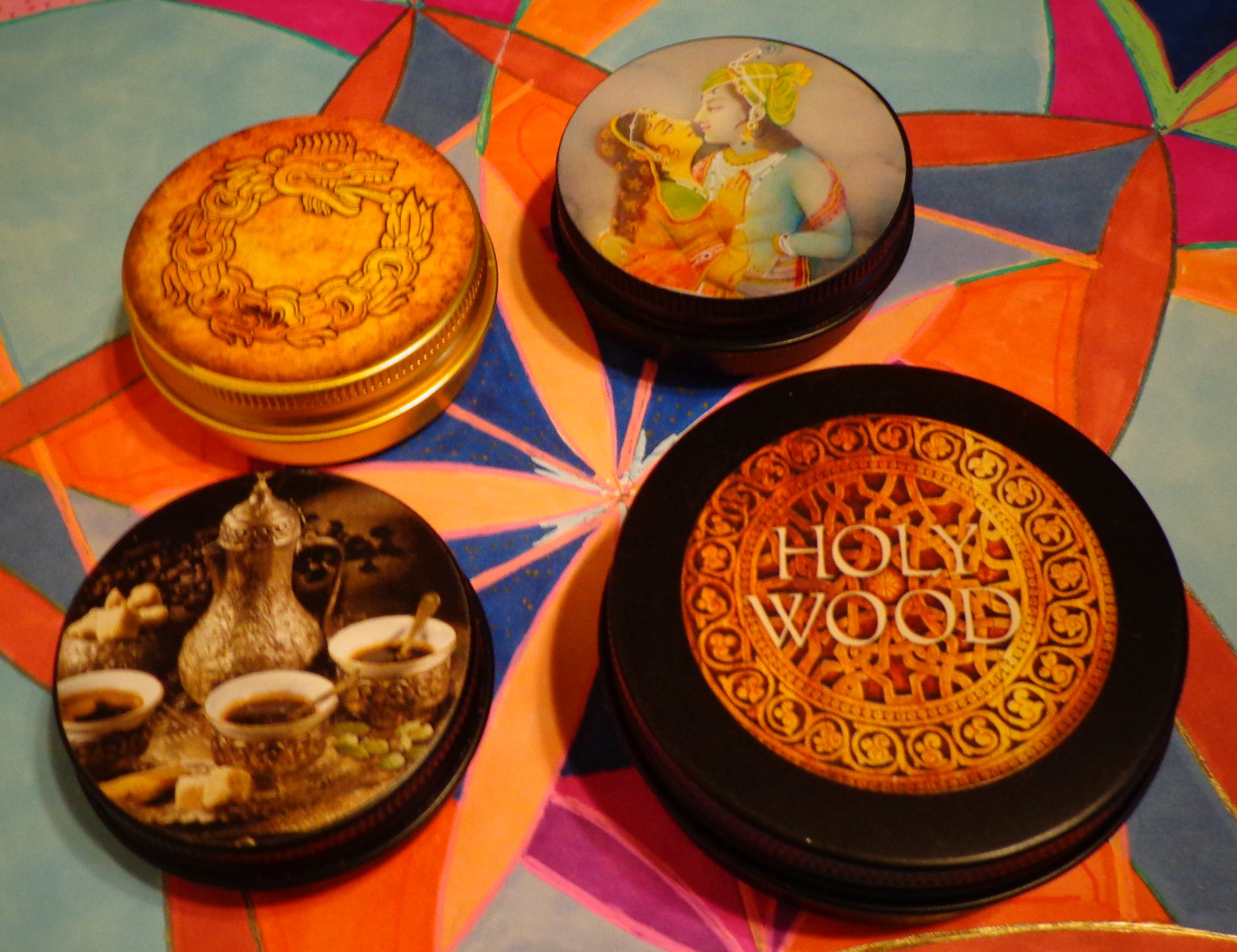 It is particularly difficult in the first half of the year to keep up with the sheer amount of brilliant incense art that both Bonnie Kerr and Katlyn Breene spin out over this period, and it can be hard to get to things before they sell out. Hopefully this guide will be helpful to readers, and there will certainly be a second round up in the (very) near future as Mermade has just released a number of intriguing new scents. The current four I have sat with a bit longer, so I wanted to get my thoughts on them out while you can still go find them.
It is particularly difficult in the first half of the year to keep up with the sheer amount of brilliant incense art that both Bonnie Kerr and Katlyn Breene spin out over this period, and it can be hard to get to things before they sell out. Hopefully this guide will be helpful to readers, and there will certainly be a second round up in the (very) near future as Mermade has just released a number of intriguing new scents. The current four I have sat with a bit longer, so I wanted to get my thoughts on them out while you can still go find them.
First of all, I do have to admit something when it comes to the Espirit de la Nature line and that is they can be very quiet incenses and with my level of domicile incense saturation, maybe some personal age, etc., I often can find it very hard to get the right space to smell these and quantify my impressions. For one thing several of Bonnie’s incenses are recommended to heat at lower temperatures, but I have found I have to really sit right by the heater to even catch the scents and the top levels often still go pretty fast. This may not be the case for everyone and it may also be the warmer weather, but it can be a bit tricky. Of course it’s well worth it because the picture you get would put reducing fractals to shame in their complexity and beauty and I’m always amazed at their almost Zen-like balance.
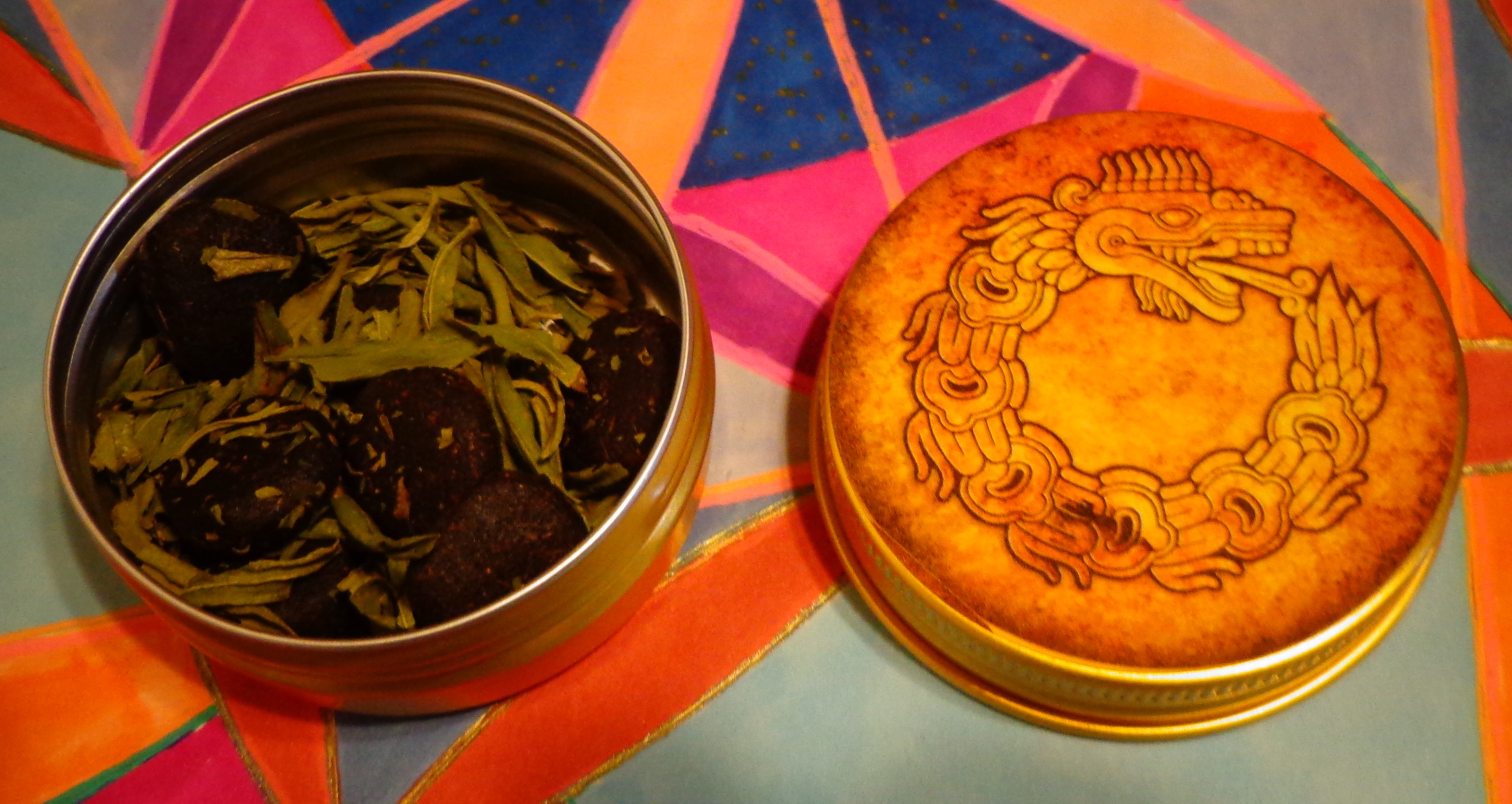 Balsam Coast is probably a bit stronger than the more floral based incenses so the balsam centrality along with a lovely sense of clay and floral in the mix cuts through. The mix is a really impressive and very different South American themed incense that even with the inclusion of palo santo and sweetgrass is actually quite different to the blends that Katlyn creates that are more based on copals. I very much love balsamic qualities in incense especially those that border on ambers and while there is some hints of that here I think this is a very new direction. It sort of dissolves into this almost gooey like marzipan direction with some slight nuttiness in the background by the midpoint that is utterly gorgeous. But the back end of the burn really brings out this sense of clay more with earthier notes more reminiscent of patchouli or vetivert. A brilliant achievement indeed to have that many things going on with one tiny nugget. It is running out quite quickly, there was only one left on Mermade when I checked, so it may be worth reaching out to Bonnie if you miss it.
Balsam Coast is probably a bit stronger than the more floral based incenses so the balsam centrality along with a lovely sense of clay and floral in the mix cuts through. The mix is a really impressive and very different South American themed incense that even with the inclusion of palo santo and sweetgrass is actually quite different to the blends that Katlyn creates that are more based on copals. I very much love balsamic qualities in incense especially those that border on ambers and while there is some hints of that here I think this is a very new direction. It sort of dissolves into this almost gooey like marzipan direction with some slight nuttiness in the background by the midpoint that is utterly gorgeous. But the back end of the burn really brings out this sense of clay more with earthier notes more reminiscent of patchouli or vetivert. A brilliant achievement indeed to have that many things going on with one tiny nugget. It is running out quite quickly, there was only one left on Mermade when I checked, so it may be worth reaching out to Bonnie if you miss it.
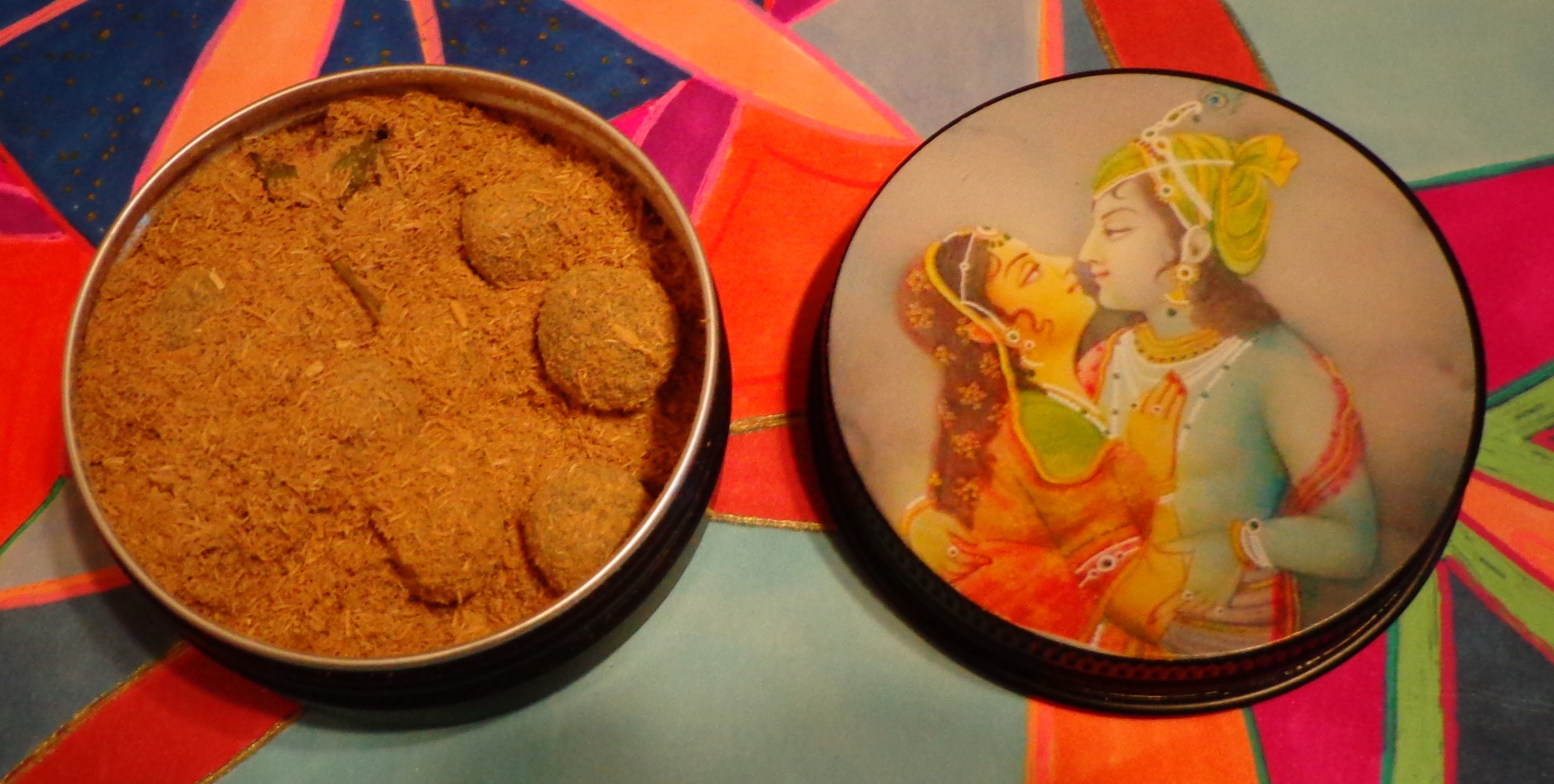 Kama Sutra, however, is like what I alluded to earlier, in order to even get some idea of the scent, I have to sit right next to the heater and bend my head over, it is that subtle (or maybe I have some personal scent blockers in my make up somewhere!) It is an incense that seems largely a vehicle for muskrat musk with a lot of interesting resins and infused resins in a mix. You can definitely tell this is a musk incense, it definitely has that sort of sweet animalic scent you tend to expect, but the question here is how much of it interacts with the rest of the scents to provide what is a lot of almost liquor like notes and even some interesting floral aspects. Part of my difficulty is that this comes off so low that you are almost teased by the incenses subtleties, there’s something kind of new and unknown that actually fuels one’s fascination. And of course one is pulled along by the name to imagine the intent of this was to work more on a pheremonal sort of level (in a way I don’t want to quite spoil what direction I’m thinking in here, but reading the description at the page might give enough clues). Overall though, I tried heating this a few times, but largely struggled to get over the threshold with it at least in terms of how I’d normally analyze an incense. Those with higher intolerances to heavier and smokier aromas might actually find this more to their resolution, but if one thinks a bit more laterally here, this is quite interesting indeed maybe even paradigm shattering. I’d certainly love to imagine more experiments in this direction, it kind of forces one to approach the incense both more intuitively and at the serpent level. Unfortunately in this case the incense had sold out by the time I posted this, so it may be worth checking with Bonnie if you’re interested.
Kama Sutra, however, is like what I alluded to earlier, in order to even get some idea of the scent, I have to sit right next to the heater and bend my head over, it is that subtle (or maybe I have some personal scent blockers in my make up somewhere!) It is an incense that seems largely a vehicle for muskrat musk with a lot of interesting resins and infused resins in a mix. You can definitely tell this is a musk incense, it definitely has that sort of sweet animalic scent you tend to expect, but the question here is how much of it interacts with the rest of the scents to provide what is a lot of almost liquor like notes and even some interesting floral aspects. Part of my difficulty is that this comes off so low that you are almost teased by the incenses subtleties, there’s something kind of new and unknown that actually fuels one’s fascination. And of course one is pulled along by the name to imagine the intent of this was to work more on a pheremonal sort of level (in a way I don’t want to quite spoil what direction I’m thinking in here, but reading the description at the page might give enough clues). Overall though, I tried heating this a few times, but largely struggled to get over the threshold with it at least in terms of how I’d normally analyze an incense. Those with higher intolerances to heavier and smokier aromas might actually find this more to their resolution, but if one thinks a bit more laterally here, this is quite interesting indeed maybe even paradigm shattering. I’d certainly love to imagine more experiments in this direction, it kind of forces one to approach the incense both more intuitively and at the serpent level. Unfortunately in this case the incense had sold out by the time I posted this, so it may be worth checking with Bonnie if you’re interested.
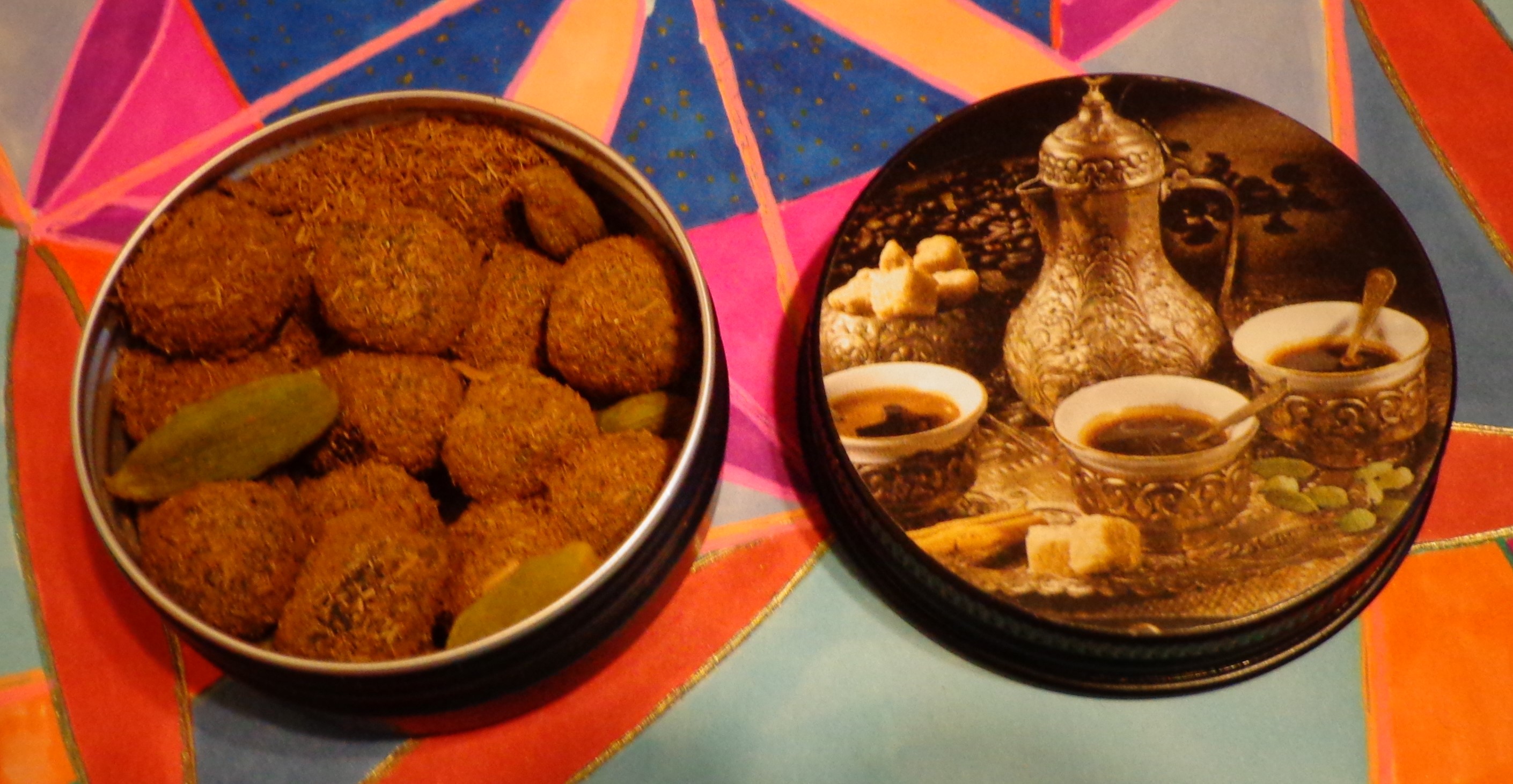 Cafe Arabic attempts something like a mix of coffee and oud. The ingredients listed here start with dark cocoa, and include a blend of Oman frankincense, Tolu balsam, and benzoin; genuine honey tobacco absolute; and agarwood. Mermade explains, “It is bound with raw labdanum resin and specially prepared honey and raisins in calvados. Also, a generous dose of oud was added to elevate this blend, making it a perfect blend for the gourmand and smoke lovers alike.” So in a way one can see this as a sidestep from Mermade kyphis as well as the labdanum experiements of the last few years. Coffee is one of the really difficult aromas to get right in incense. Vedic Vaani, for example, do a few coffees that actually abut on coconut and so the experience is often how does an incense creator move things in that “smell of brewing coffee” direction more. There’s certainly some basis for labdanum, balsam and some aspects of previous kyphis that move in this direction, after all you are kind of looking for a darker sort of scent, but if you’re marrying the coffee with its sweeter cousins in drinks, it gets a bit easier to accomplish. It is fun in a lot of these incenses to see how balsam can be coopted to move in a number of different directions and there is certainly top notes that work well to create a coffee scent. Agarwood and oud also do so in part, and you get that sort of secondary effect of creating something more deluxe with them as well. I tried this out on a couple different heaters to see if I could see how different temperatures volatized this one. I would have thought hotter temperatures would bring out the oud or agarwood more but I was surprised to find the balsamic qualities to be a bit stronger when I turned it up. The coffee is really something of a fleeting top note and the middle is more of a conglomeration of different effects. The honey tobacco absolute in particularly moves this in a sort of harvest-like or summer direction. So in many ways this is something of a chameleon and even though I heated this nearly a half dozen times before I put the review down, it felt like I was still pursing what to say about it.
Cafe Arabic attempts something like a mix of coffee and oud. The ingredients listed here start with dark cocoa, and include a blend of Oman frankincense, Tolu balsam, and benzoin; genuine honey tobacco absolute; and agarwood. Mermade explains, “It is bound with raw labdanum resin and specially prepared honey and raisins in calvados. Also, a generous dose of oud was added to elevate this blend, making it a perfect blend for the gourmand and smoke lovers alike.” So in a way one can see this as a sidestep from Mermade kyphis as well as the labdanum experiements of the last few years. Coffee is one of the really difficult aromas to get right in incense. Vedic Vaani, for example, do a few coffees that actually abut on coconut and so the experience is often how does an incense creator move things in that “smell of brewing coffee” direction more. There’s certainly some basis for labdanum, balsam and some aspects of previous kyphis that move in this direction, after all you are kind of looking for a darker sort of scent, but if you’re marrying the coffee with its sweeter cousins in drinks, it gets a bit easier to accomplish. It is fun in a lot of these incenses to see how balsam can be coopted to move in a number of different directions and there is certainly top notes that work well to create a coffee scent. Agarwood and oud also do so in part, and you get that sort of secondary effect of creating something more deluxe with them as well. I tried this out on a couple different heaters to see if I could see how different temperatures volatized this one. I would have thought hotter temperatures would bring out the oud or agarwood more but I was surprised to find the balsamic qualities to be a bit stronger when I turned it up. The coffee is really something of a fleeting top note and the middle is more of a conglomeration of different effects. The honey tobacco absolute in particularly moves this in a sort of harvest-like or summer direction. So in many ways this is something of a chameleon and even though I heated this nearly a half dozen times before I put the review down, it felt like I was still pursing what to say about it.
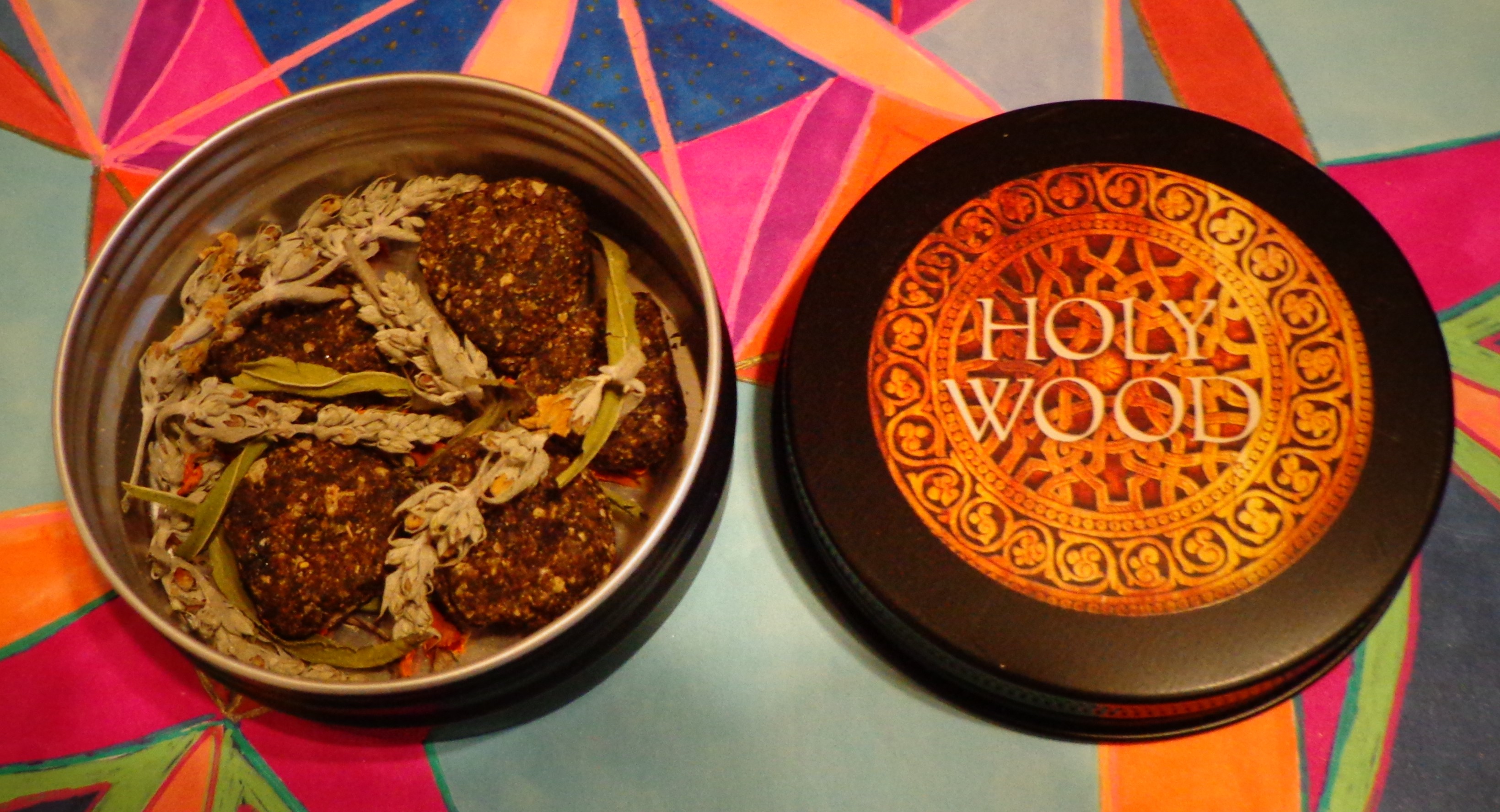 Holy Wood is a real triumph, it might be my very favorite of all of Katlyn’s South/Central American themed incenses so far. If I was to do a real quick rendering of what this is like for me, it’s almost something like a chocolate-peppermint confection. I’m not always a huge fan of palo santo, so the fact that this contours that ingredient to exemplify everything I do like about it really makes this an attractive and powerful incense for me and something of a revelation. All of the cooling, minty aspects of that wood have been drawn out and I think the mix of it with vanilla, honey and balsam manage to combine to give it that confectionary, sweet feel. I’ve mentioned elsewhere that sage can often have some really interesting sweet notes as well and with three kinds you would think that might herbally overwhelm the incense but it just gives it an interesting sense of lateral depth instead. I would guess from the ingredients what gives it a more darker, chocolate-like sense like you might find in the Cafe Arabic is the labdanum resin, mixed with everything else going on it almost feels like some level of molasses to give it a darker, thicker background. It’s wonderfully named as the overall effect is redolent of a shamanic experience, like a deep cooling mist through Amazonian rainforests. Nice to see this one isn’t running out as I review this either, so be sure to add this to any order you might make, it’s that great.
Holy Wood is a real triumph, it might be my very favorite of all of Katlyn’s South/Central American themed incenses so far. If I was to do a real quick rendering of what this is like for me, it’s almost something like a chocolate-peppermint confection. I’m not always a huge fan of palo santo, so the fact that this contours that ingredient to exemplify everything I do like about it really makes this an attractive and powerful incense for me and something of a revelation. All of the cooling, minty aspects of that wood have been drawn out and I think the mix of it with vanilla, honey and balsam manage to combine to give it that confectionary, sweet feel. I’ve mentioned elsewhere that sage can often have some really interesting sweet notes as well and with three kinds you would think that might herbally overwhelm the incense but it just gives it an interesting sense of lateral depth instead. I would guess from the ingredients what gives it a more darker, chocolate-like sense like you might find in the Cafe Arabic is the labdanum resin, mixed with everything else going on it almost feels like some level of molasses to give it a darker, thicker background. It’s wonderfully named as the overall effect is redolent of a shamanic experience, like a deep cooling mist through Amazonian rainforests. Nice to see this one isn’t running out as I review this either, so be sure to add this to any order you might make, it’s that great.
 This is an awfully long company and incense name for a bundle of incense that’s so super cute and tiny. I’m becoming more and more expert with small and cute things making a much larger impression, since I adopted a baby budgie. Since she is my unremitting blessing, I’m going to dedicate this review to her and put a picture down at the end since I wrote this just after Christmas. She sends budgie snuggles to all ORS readers.
This is an awfully long company and incense name for a bundle of incense that’s so super cute and tiny. I’m becoming more and more expert with small and cute things making a much larger impression, since I adopted a baby budgie. Since she is my unremitting blessing, I’m going to dedicate this review to her and put a picture down at the end since I wrote this just after Christmas. She sends budgie snuggles to all ORS readers.
 It is particularly difficult in the first half of the year to keep up with the sheer amount of brilliant incense art that both Bonnie Kerr and Katlyn Breene spin out over this period, and it can be hard to get to things before they sell out. Hopefully this guide will be helpful to readers, and there will certainly be a second round up in the (very) near future as Mermade has just released a number of intriguing new scents. The current four I have sat with a bit longer, so I wanted to get my thoughts on them out while you can still go find them.
It is particularly difficult in the first half of the year to keep up with the sheer amount of brilliant incense art that both Bonnie Kerr and Katlyn Breene spin out over this period, and it can be hard to get to things before they sell out. Hopefully this guide will be helpful to readers, and there will certainly be a second round up in the (very) near future as Mermade has just released a number of intriguing new scents. The current four I have sat with a bit longer, so I wanted to get my thoughts on them out while you can still go find them.



 So in order to be transparent, Dimension 5 creator Josh Matthews and I have been having long incense chats about as long as he introduced himself a year or two ago. Perhaps such knowledge might temper one’s reading of my enthusiasm for his work, but what I have discovered is that his entire process, from the choosing of good ingredients, all the way to the blending and final creation of one of his sticks has a quality control aspect that really can only come from someone fully immersed in the art form. And so it’s been my opinion that nearly every new batch I receive from him is better than the last. So you can only imagine what my anticipation was when he started to use kyara in his sticks. I believe these are the first two Dimension 5 incenses with that wood’s notable presence, and there was certainly some wait time while he was in the lab. And it’s not even just the kyara, there are incredibly fine ingredients in these sticks across the board, I’d guess because they are curated by an enthusiast whose incenses are often going to contain better woods and oils than 90% of what’s out there on the commercial market. Of course these sticks go really fast. It’s not even that they’re skinny and short but they’re so enrapturing you barely notice the time that goes by. The scents are super concentrated and I absolutely do not burn a single stick without ensuring I don’t walk away and often for the most part I hold them until I can’t anymore. I stress that in many ways these are not background incenses, they are more like vehicles for the finest of the fine, and not only that, but the matching of the finest ingredients is meant to enhance the complexities of everything. Nothing is thrown together and experiments are made to make sure everything matches perfectly. (Also apologies for the picture above and below, but the gold print on white label of the top incense was a bit tough for me to get right with time constraints and the cylinders didn’t sit on their own with the label facing the camera, will hopefully replace one or both a bit later).
So in order to be transparent, Dimension 5 creator Josh Matthews and I have been having long incense chats about as long as he introduced himself a year or two ago. Perhaps such knowledge might temper one’s reading of my enthusiasm for his work, but what I have discovered is that his entire process, from the choosing of good ingredients, all the way to the blending and final creation of one of his sticks has a quality control aspect that really can only come from someone fully immersed in the art form. And so it’s been my opinion that nearly every new batch I receive from him is better than the last. So you can only imagine what my anticipation was when he started to use kyara in his sticks. I believe these are the first two Dimension 5 incenses with that wood’s notable presence, and there was certainly some wait time while he was in the lab. And it’s not even just the kyara, there are incredibly fine ingredients in these sticks across the board, I’d guess because they are curated by an enthusiast whose incenses are often going to contain better woods and oils than 90% of what’s out there on the commercial market. Of course these sticks go really fast. It’s not even that they’re skinny and short but they’re so enrapturing you barely notice the time that goes by. The scents are super concentrated and I absolutely do not burn a single stick without ensuring I don’t walk away and often for the most part I hold them until I can’t anymore. I stress that in many ways these are not background incenses, they are more like vehicles for the finest of the fine, and not only that, but the matching of the finest ingredients is meant to enhance the complexities of everything. Nothing is thrown together and experiments are made to make sure everything matches perfectly. (Also apologies for the picture above and below, but the gold print on white label of the top incense was a bit tough for me to get right with time constraints and the cylinders didn’t sit on their own with the label facing the camera, will hopefully replace one or both a bit later). Dimension 5’s first foray into kyara was the Age of Reason, an incense Josh not only took a long time to create but I’d also guess the creation probably informed the second incense quite a bit on its own as well. I most recently experienced the second incense, so I had amazingly forgotten how astonishing this one is on its own. Right from the get-go it’s as if there’s a subflame of kyara rising with the other ingredients, dancing like a jeweled cobra. I mean the list of ingredients alone is enough to make an incense fan’s knees weak, with kyara, “Sultani 1975” and “Tigerwood 1995” ouds (both from Ensar Oud) cardamom, clove, cinnamon, costus root, Sumatran benzoin, and borneol camphor included. It’s not a bad idea to have this list handy because each item you concentrate on really plays a part in the aroma and its fascinating to see them thread their way through. There’s something in even his incenses without sandalwood that remind me of it, although in this case I am probably picking up on notes from the ouds. The costus root and the camphor in particular strike me as matching aspects of the complexity of both the kyara and the ouds. The issue with anything this premium is as long as you sit there writing about it, you will notice more about it. I notice how often some of these notes remind me of the sadly deleted Shoyeido incenses for example. I noticed little spirouettes of mint and green aspects that remind me of heena oil, that almost licorice-like note all the best of kyaras often show, if not from the wood then from its combination with other ingredients, and notes both purple and green. The resinous qualities are magnificent, something which both the wood and oils emit together. What can you say more except this is likely to ricochet in each user’s brain like very little else. If you’ve tried any other Dimension 5 incenses you might be thinking this is Dimension 6. And if you really covet kyara, this is a must in every way.
Dimension 5’s first foray into kyara was the Age of Reason, an incense Josh not only took a long time to create but I’d also guess the creation probably informed the second incense quite a bit on its own as well. I most recently experienced the second incense, so I had amazingly forgotten how astonishing this one is on its own. Right from the get-go it’s as if there’s a subflame of kyara rising with the other ingredients, dancing like a jeweled cobra. I mean the list of ingredients alone is enough to make an incense fan’s knees weak, with kyara, “Sultani 1975” and “Tigerwood 1995” ouds (both from Ensar Oud) cardamom, clove, cinnamon, costus root, Sumatran benzoin, and borneol camphor included. It’s not a bad idea to have this list handy because each item you concentrate on really plays a part in the aroma and its fascinating to see them thread their way through. There’s something in even his incenses without sandalwood that remind me of it, although in this case I am probably picking up on notes from the ouds. The costus root and the camphor in particular strike me as matching aspects of the complexity of both the kyara and the ouds. The issue with anything this premium is as long as you sit there writing about it, you will notice more about it. I notice how often some of these notes remind me of the sadly deleted Shoyeido incenses for example. I noticed little spirouettes of mint and green aspects that remind me of heena oil, that almost licorice-like note all the best of kyaras often show, if not from the wood then from its combination with other ingredients, and notes both purple and green. The resinous qualities are magnificent, something which both the wood and oils emit together. What can you say more except this is likely to ricochet in each user’s brain like very little else. If you’ve tried any other Dimension 5 incenses you might be thinking this is Dimension 6. And if you really covet kyara, this is a must in every way. 

 I bought
I bought  Be en Foret’s Lavender Kyphi (picture is just a sample container but cool enough to include – check out the final artwork at the link) is another one of her intriguing variations on the old Egyptian formula. Check out this amazing ingredient line up: “From the Garden: Salted lavender buds and Dominican Sage leaves from my garden, Spikenard root from the Himalayas, Violet leaf extract from France. Resins: Dark Frankincense, Tolu Balsam, Dark Benzoin, Labdanum, Kua Myrrh, Liquidambar, Peru Balsam. A dash of aged Ambergris in Sandalwood oil ● Bound with organic honey and raisins ● Rolled in Agarwood and Sandalwood powder.”
Be en Foret’s Lavender Kyphi (picture is just a sample container but cool enough to include – check out the final artwork at the link) is another one of her intriguing variations on the old Egyptian formula. Check out this amazing ingredient line up: “From the Garden: Salted lavender buds and Dominican Sage leaves from my garden, Spikenard root from the Himalayas, Violet leaf extract from France. Resins: Dark Frankincense, Tolu Balsam, Dark Benzoin, Labdanum, Kua Myrrh, Liquidambar, Peru Balsam. A dash of aged Ambergris in Sandalwood oil ● Bound with organic honey and raisins ● Rolled in Agarwood and Sandalwood powder.”  And if kyphis are a tradition going back to Egyptian times, Katlyn has made something of a vintage out of
And if kyphis are a tradition going back to Egyptian times, Katlyn has made something of a vintage out of
You must be logged in to post a comment.